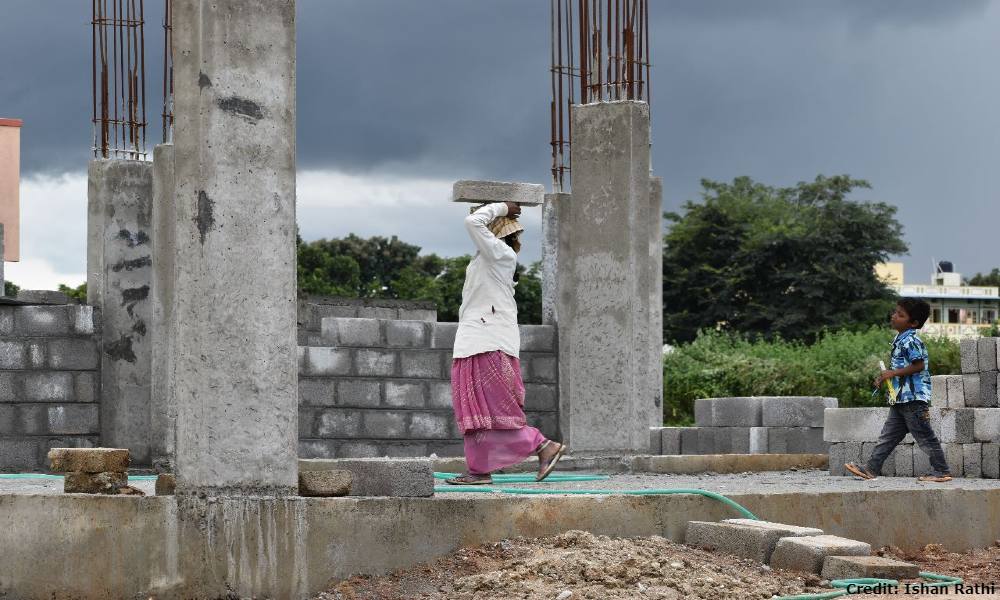Unemployment in Karnataka has increased by 2.6 times due to the increase in the women’s unemployment rate.
The female unemployment rate in Karnataka has increased by 342 percent, which ultimately drove up the overall unemployment rate in the state by 2.6 times. This increase is indicated in the data by the Centre for Monitoring Indian Economy (CMIE) analysed for the four-month period from May to August for 2021 and 2022.
The female unemployment rate in the rural areas of Karnataka has spiked from 1.5 percent to 13.3 percent in the past year. Dr. Aritri Chakravarty, Professor of Economics at Dr. B. R. Ambedkar School of Economics University, Bangalore, said that the main reason for this drastic rise is the slow recovery of female jobs, post COVID-19, compared to that of men. “After the pandemic, women in rural areas did not get back the jobs they lost during the pandemic, but the recovery for men was rapid,” she said.
A study shows that women who lost their jobs during the pandemic were 17 times less likely to find another job than men. Possible reasons attributed for the disparity are the increased burden of household work, lack of childcare options, spending more time in care, and other unpaid activities. On the demand side, industries where women are overrepresented were severely affected.
A huge portion of the increase in female unemployment is in the age group of 15 – 24 years, and this may be a reason for reduced labour participation, as people in that age group may choose to study higher and invest in human capital. “Since the age group of 15 – 24 years constitutes a huge portion of unemployment, there is a high probability that they choose to study further, and not opt for employment. While the above-mentioned may be a good practice, the rate for the age group of 25 – 34 is a concern,” Dr. Chakravarty said. The same study said that youth, aged 15 to 24, are 16 times more likely to not recover compared to older workers.
Sitha, from Bhavikere district, Bangalore rural, said that she was not able to settle in one job, and frequently faced unemployment as different businesses kept firing her. “I was fired from the job as a billing clerk during COVID-19 and found another job as a sales representative in a supermarket. But I was again fired for no reason,” she said.
Alok. S. Madhav, a Human Resource manager at Software as a Service (SaaS) startup in Bangalore, said that reasons like COVID-19 pandemic, working from home, and others have caused a dent in women’s employment. He said that this is not a deliberate attempt by any organizations and that there is a dearth of women applying for jobs. “We are trying to employ equitably as per our organization’s policy, but a woman not being open to work is not something we can control,” he said.
People in the rural areas still follow the patriarchal system and do not send out a female to earn a living, said Dr. Suresha R, professor of Sociology at Bangalore University. He also said that even when they are given some freedom to work, they have no decision-making power. “Even at the Gram Panchayat level, a woman Sarpanch’s (local chief) decision is influenced by her husband,” he added.
The data shows that the female labour force participation rate fell by a large margin in all age groups from last year, except for the age group of 20 to 24 years. Labour force participation takes into account the people who are employed, and those who are willing to work and are actively looking for a job.
For the country, in contrast, the unemployment rate fell from 8.57 percent to 7.43 percent from May-August 2021. The same data shows that female unemployment in rural areas saw a slight increase from 11.4 percent to 13 percent. The data shows a youth challenge for the country, where labour force participation among the youth, aged 25 to 34 is high, but also has a high unemployment rate. Study shows a persistent decline in female labour force participation in the country even before the pandemic, from 2016 to 2019.
During this period of macroeconomic uncertainty with higher costs due to inflation, and the Russia-Ukraine war, businesses are employing cost-cutting measures and are laying off employees. “During recessions, there is generally less employment opportunity, as businesses will be prudent in spending. This can take its toll on female employment, and mainly for the less-skilled ones,” Dr. Chakravarty said.
Labour laws should be enforced much more effectively to give women a flexible working environment, said Dr. Suresha. “We continue to see workplace harassment and dominations against female employees, which demotivates them to work,” he said. Friendly working conditions, including equal wages, fair treatment, and promotions are essential to sustain women’s workforce, he added.
Dr. Suresha said that skill-based education is the primary driver of employment, and in rural areas, this is neglected. “Higher education is mostly established far from rural areas and is not financially viable. So rural women forgo these essential parts which affect their employment opportunity,” he said. All the stakeholders involved i.e., government, educational institutions, and people themselves have to emphasize more in imparting skills, he said. “With the National Education Policy aiming to provide objective, and practical skill-based training, the impact that it will have on the employment front is to be seen,” he added.
The Global Investors Meet (GIM) 2022, held in Karnataka saw investments to the tune of Rs. 9.87 lakh crore, which has a target of providing employment to six lakh people.





1 thought on “Women’s unemployment spikes up by 340 percent”
Comments are closed.